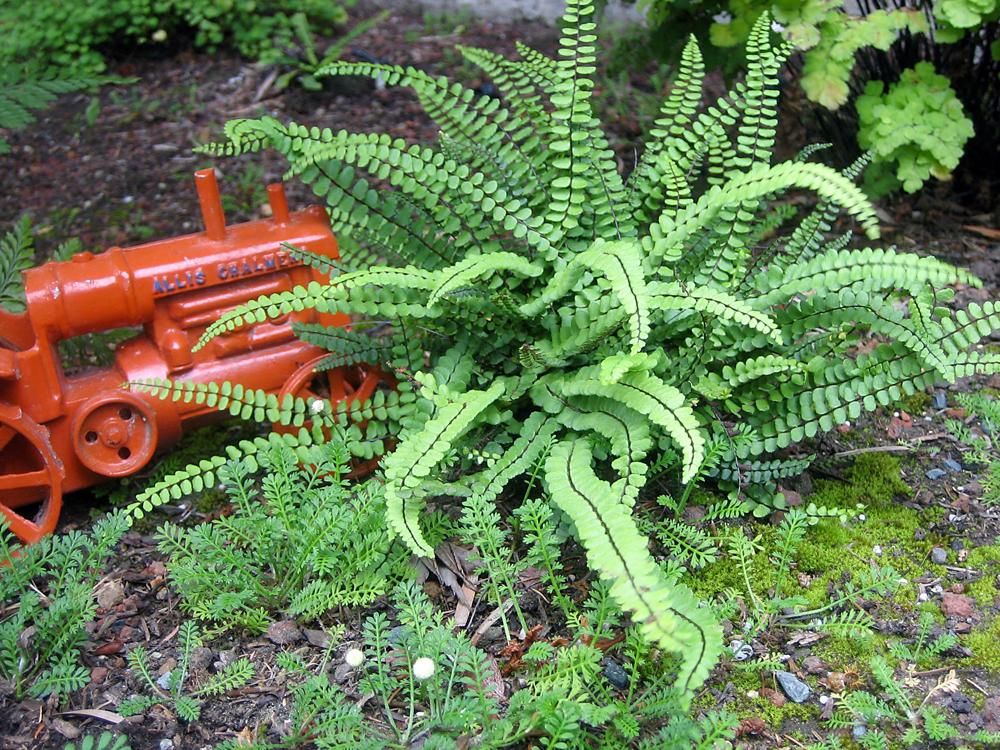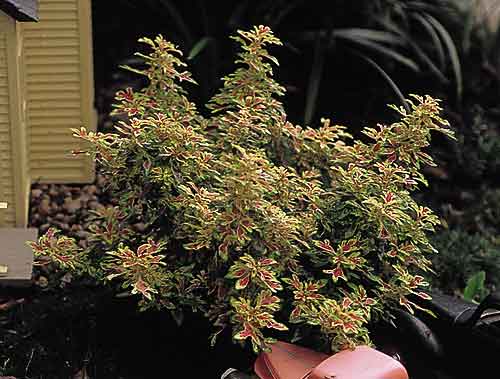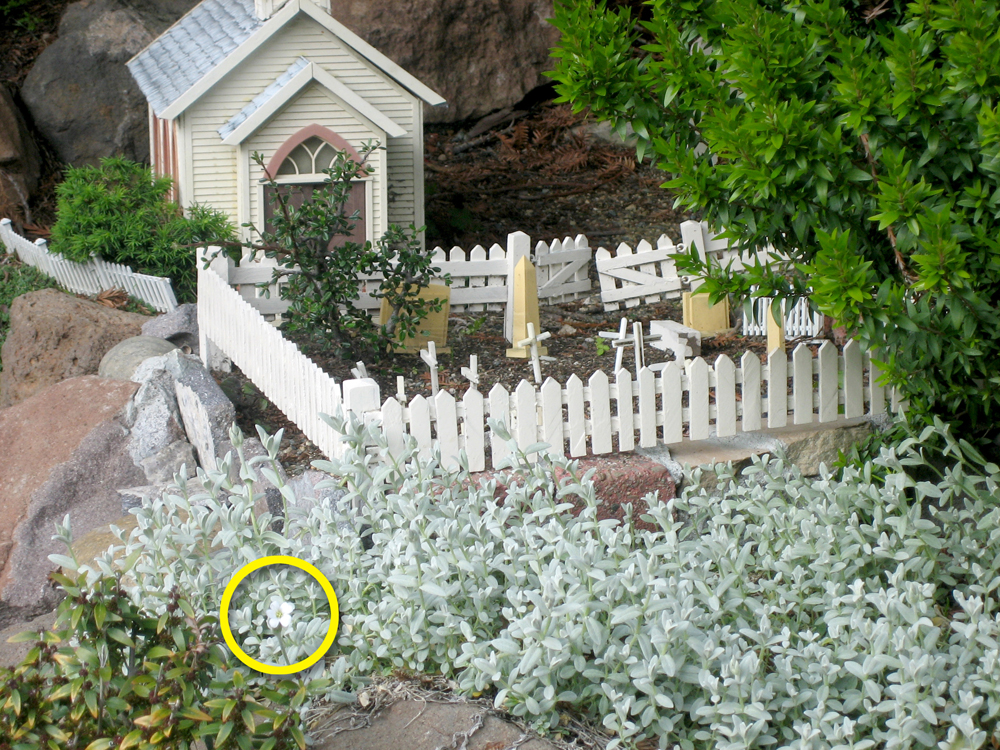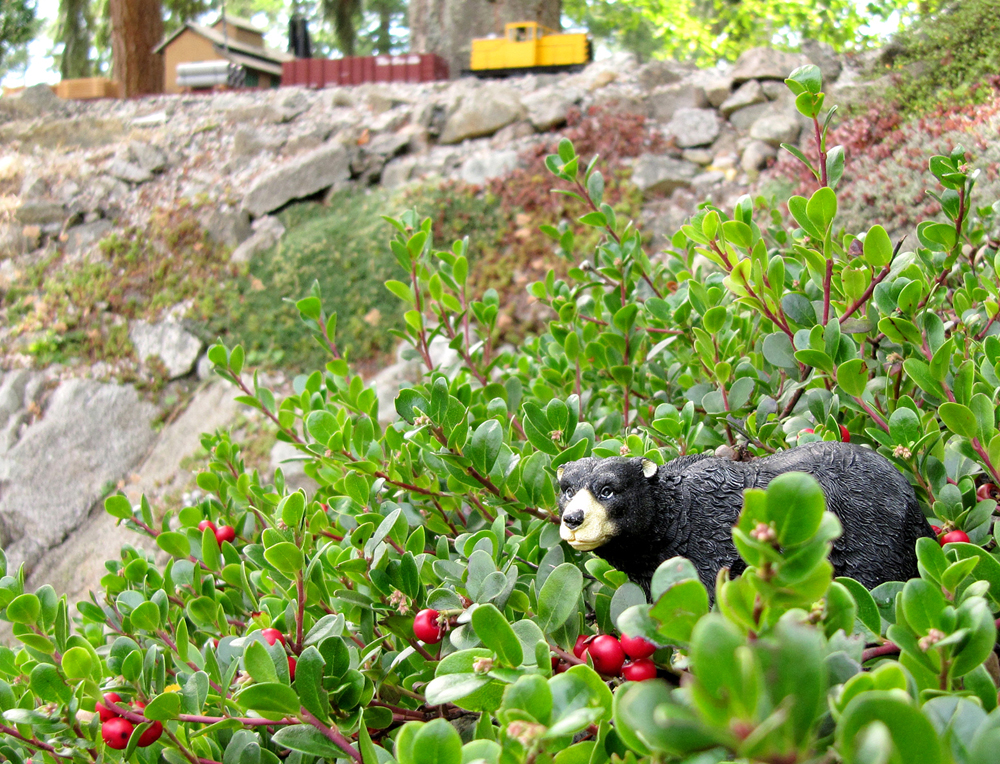Common name: Watercress
Latin name: Nasturtium officinale, N. microphyllum
Plant type: Water plant
Plant size: 4″ high and spreading rapidly
USDA Hardiness Zones: 4-10
Cultural needs: Moist soil or floating on water, sun or shade
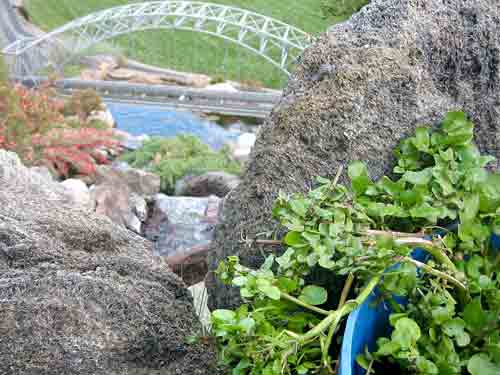
Watercress is a plant for many purposes in a garden railway. To quickly green up your pond, watercress, with its bright, green-lobed leaves, can be floated on the water’s surface or planted in a bog or in pots just below the surface. Later, clusters of tiny white flowers rise an inch or so above the foliage. Introduced from Europe, escaped watercress has become invasive in some states (it’s restricted in Texas).
If it gets out of hand in your pond, handfuls can be shared or mulched under shrubs (responsibly, don’t dispose into recyclables container). In the photo above, watercress is growing in a biological filter (blue tub) filled with either small lava rocks or a mass of plastic “bio balls,” which house microorganisms that break down pond debris into fertilizer used by watercress. The filter sits behind the waterfall and keeps the water clean. A member of the cabbage family, mustard-tasting watercress can be purchased at supermarkets, then rooted in wet sand and potted up for your pond to compete with algae, shade the water, and provide nutritious filler for sandwiches.
Learn more about water plants for the garden railway.






